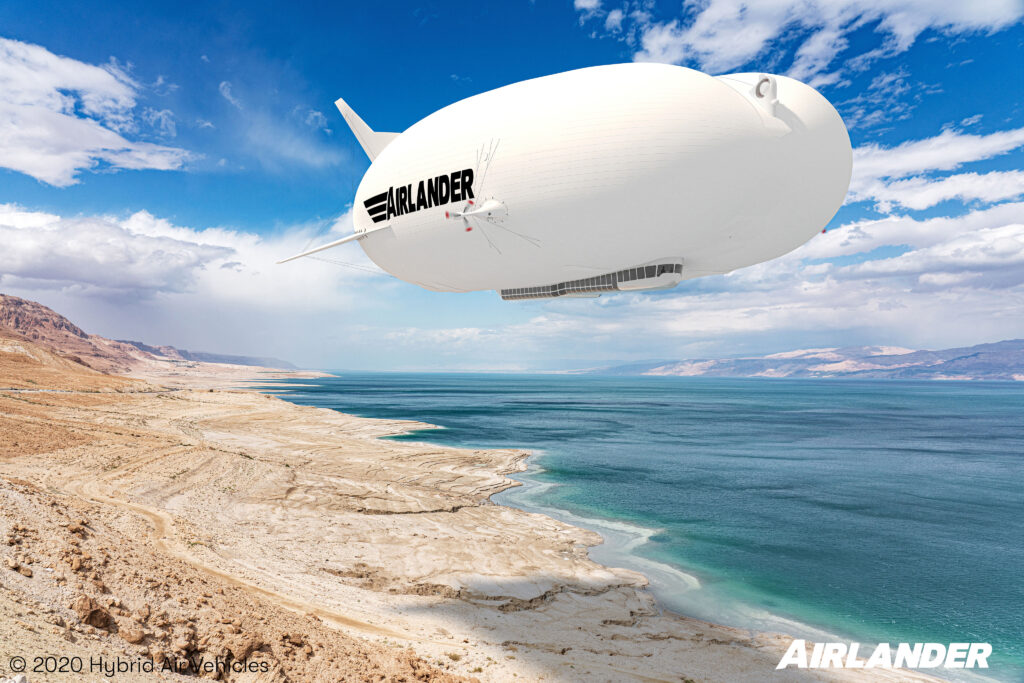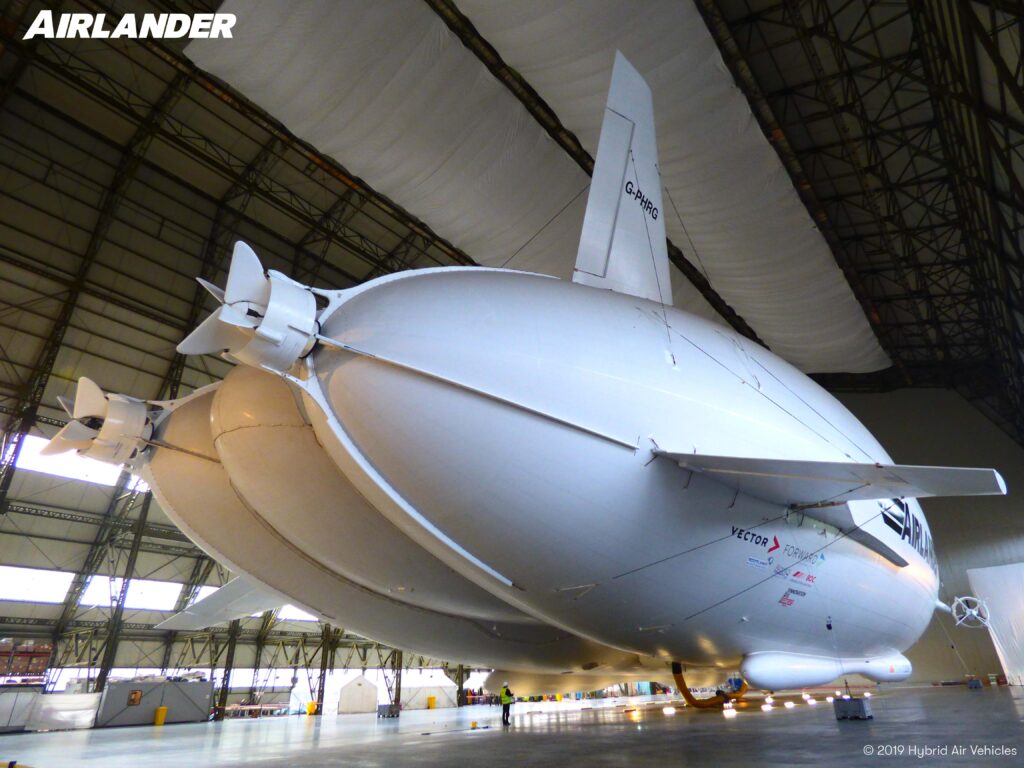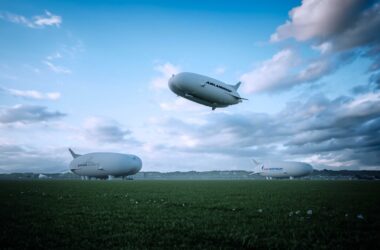Air Nostrum, a prominent Spanish regional airline, has made waves in the industry by doubling its reservation order for the innovative Airlander 10 aircraft.
This move underscores the potential of wind-assisted propulsion systems. Air Nostrum’s decision to amplify its Airlander 10 order from 10 to a whopping 20 aircraft shows the industry’s growing faith in the capabilities of hybrid airships.
Developed by Hybrid Air Vehicles, the Airlander 10 can carry up to 100 passengers or an equivalent cargo load while leaving a minimal emissions footprint. It is widely expected that its service entry will be after 2027.
Air Nostrum will also join the Hybrid Air Vehicles’ Development Partner Programme. The collaboration aims to gather actionable insights to shape the next iteration of this airship, the Airlander 50. With a payload capacity of 50 tons, the Airlander 50 promises to be a behemoth in the skies, surpassing its predecessor, which is already considered one of the largest aircraft globally.
The strategic deployment of these airships is noteworthy. While Spain remains a primary focus for Air Nostrum, plans are afoot to assign some of these airships to its Maltese subsidiary, Mel Air. Given Malta’s central location in the Mediterranean, Mel Air is poised to operate the airships on short routes within the Maltese archipelago and extend its reach to neighbouring regions like Sicily, the Italian mainland, and even North Africa.
Engineering: The engineering behind the Airlander 10
Design and Structure The Airlander 10 is classified as a hybrid airship. Its lift is derived from aerostatic (helium buoyancy) and aerodynamic forces. The hull is elliptical with a flattened contour, functioning as a lifting body. This structure enables the airship to generate a substantial portion of its lift aerodynamically, akin to conventional aircraft. The helium within the envelope is responsible for counteracting between 60% and 80% of the aircraft’s weight. The Airlander 10 is equipped with pneumatic skids, facilitating landings and takeoffs on diverse terrains, including aquatic surfaces.
 Beautiful scenic view from above along the dry rocky Dead Sea Coast of the West Bank Israel. Jordan Dead Sea Coast on the horizon. Dead Sea, Ein Gedi, Israel, Middle east.
Beautiful scenic view from above along the dry rocky Dead Sea Coast of the West Bank Israel. Jordan Dead Sea Coast on the horizon. Dead Sea, Ein Gedi, Israel, Middle east.
Propulsion System The propulsion of the Airlander 10 is managed by four Thielert Centurion 325 hp V8 diesel engines. These engines operate three-bladed ducted propellers, ensuring thrust and manoeuvrability. The machines are positioned with two at the rear and two on the forward fuselage’s sides. The side engines can pivot, providing thrust vectoring, crucial for precise flight control.
Operational Capabilities The operational design of the Airlander 10 stresses endurance. The airship can sustain flight for up to five days with onboard crew and exhibits extended durations when unmanned. Its applications span transportation, aerial surveillance, disaster relief, and luxury services. The modular design of its mission module allows for diverse configurations, catering to both civilian and defence requirements.

History The inception of the Airlander 10 can be traced to the HAV 304, initially developed for the United States Army’s Long Endurance Multi-intelligence Vehicle (LEMV) programme. After discontinuing the LEMV project, HAV procured the airship, adapting it for civilian purposes and renaming it the Airlander 10. While its design has been refocused for civilian applications, the Airlander 10 retains the adaptability for defence-related tasks.
The craft exemplifies the integration of traditional and modern aerospace engineering techniques. Its hybrid design, which merges aerostatic and aerodynamic principles, distinguishes it from conventional airships.
- Air Nostrum doubles its order for the Airlander 10 aircraft, signalling a solid commitment to sustainable aviation.
- The Airlander 10, developed by Hybrid Air Vehicles, can carry up to 100 passengers with a minimal emissions footprint.
- WindWings by Yara Marine, a wind-assisted propulsion system, offers significant fuel efficiency, reducing consumption and emissions.
- The collaboration between airlines and tech innovators like BAR Technologies points to a greener, more sustainable future for aviation.








